10 of Rock’s Greatest Love Songs
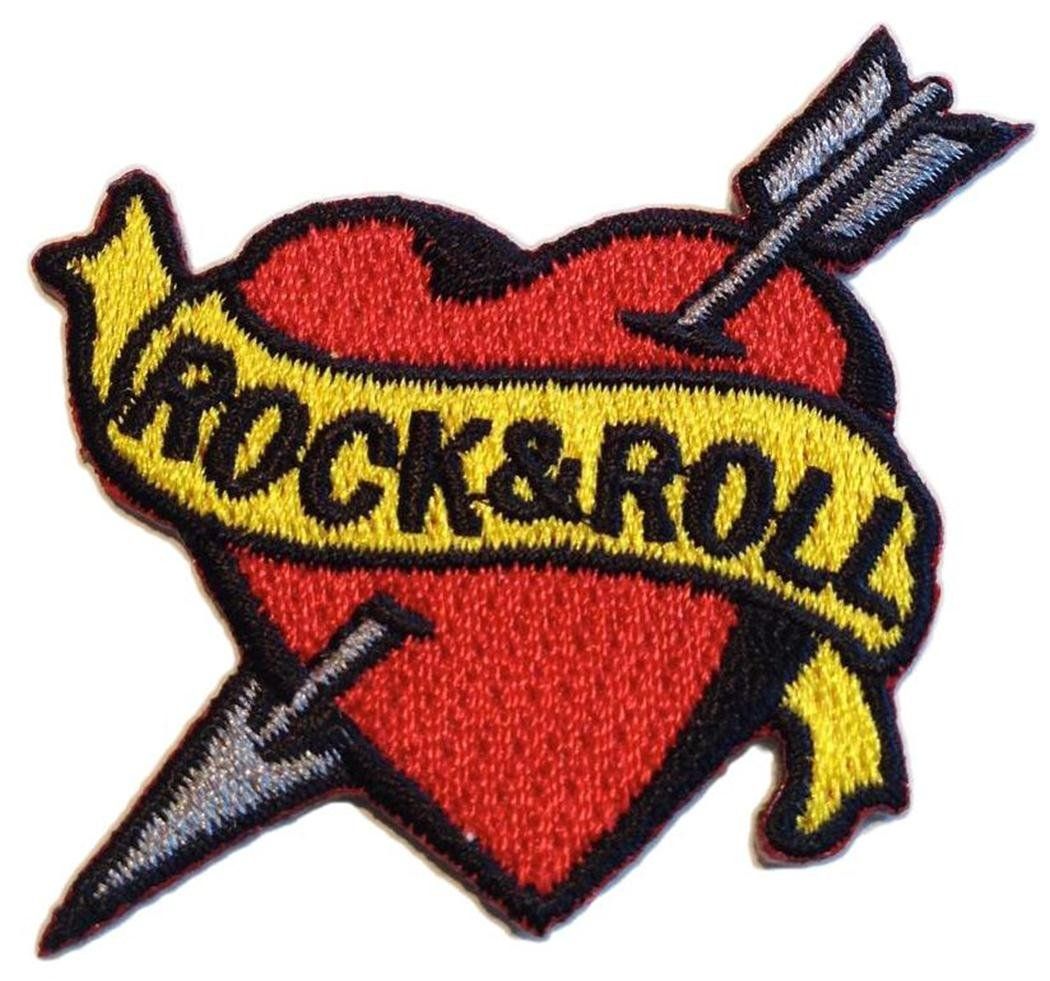 For as long as long as rock music’s been around (65+ years and counting), the #1 topic in its songs has been, far and away, love. When it’s going right, when it’s gone wrong, when it’s new, when it’s stood the test of time, when it never really was – love is all around, all you need and a 4-letter word.
For as long as long as rock music’s been around (65+ years and counting), the #1 topic in its songs has been, far and away, love. When it’s going right, when it’s gone wrong, when it’s new, when it’s stood the test of time, when it never really was – love is all around, all you need and a 4-letter word.
We would be presumptuous if we said this is a list of “the” greatest rock love songs. Choices, especially in this category, are always intensely personal. It’s the song that always makes you think of that one man or woman, the one that reminds you of a specific time and place or simply one that helped you get through a tough time when you thought you’d never love again.
Here’s our list. What’s on yours?
 Something – The Beatles
Something – The Beatles
George Harrison’s exquisite ode to his then-wife Pattie Boyd. A song so beautiful even Frank Sinatra named it as one of the greatest compositions ever (and we know how Frank felt about rock in general).
- Walk Away Renée – Left Banke
Not all great love songs are written about happy love affairs or even about bad break-ups. This classic was written by Michael Brown about a love that never was. He was hopelessly in love with a young girl named Renée Fladen, but even writing this classic didn’t melt her heart. She never ever gave him a tumble.
- Faithfully – Journey
Written by Journey keyboard player Jonathan Cain in about a half hour, the composer claimed the melody came to him in a dream. He also said the lyrics were inspired by his Christian faith. That may give you something to think about the next time you hear it.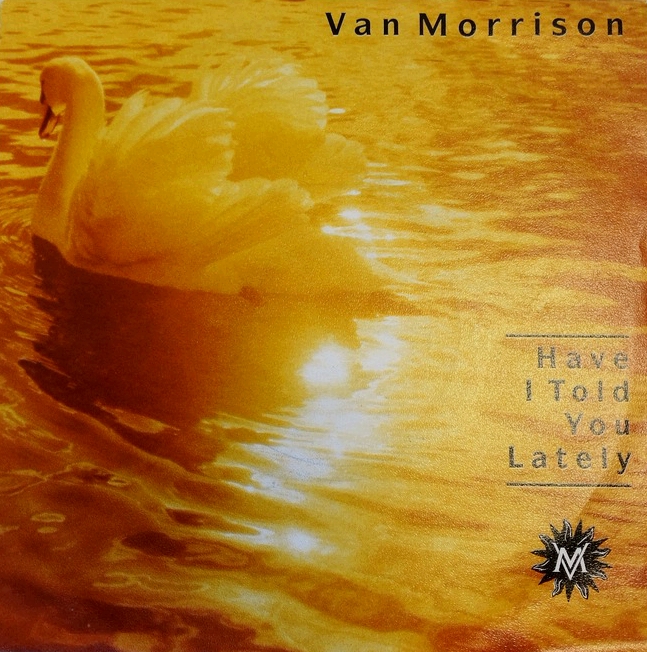
- Have I Told You Lately That I Love You – Van Morrison
Speaking of Christian faith, this deeply felt love song was composed by Van Morrison not about a woman. The song is actually about God. The song has been covered by dozens of artists (Rod Stewart took it into the Top 10), most of whom, we’ll bet, are unaware of this fact.
- She’s the One – Bruce Springsteen
At the opposite end of the spiritiual spectrum, if there’s a better song that expresses the sweet torture of pure carnal yearning for someone who may not be the wisest choice for you, we haven’t heard it. “With her soft French cream, standing in that doorway like a dream, I wish she’s just leave me alone.” And yet, you know that’s neither what he really wants, nor what’s going to happen.
- Time After Time – Cyndi Lauper
Believe it or not, the inspiration for this song was the 1979 science-fiction film, Time After Time. Unsurprisingly, the song’s lyrics arose from the romantic problems the tune’s co-authors, Lauper & Rob Hyman, were having with their respective significant others.
- More Than a Feeling – Boston
The song that introduced the world to Boston remains their best and most recognizable song. Composer/guitarist, Tom Scholz credits another song on this list as his main inspiration – “Walk Away Renée.”
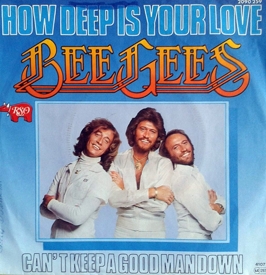 How Deep Is Your Love – Bee Gees
How Deep Is Your Love – Bee Gees
While disco eventually imploded, it’s worth remembering that not all of that music was bad. In fact, the Bee Gees created truly great pop songs before, during and after the dance craze. This song, coming at the height of the craze and the Bee Gees' career, has stood the test of time.
- Wonderful Tonight – Eric Clapton
Impossible as it may seem, this tender ballad was also written about Pattie Boyd when she was married to Harrison’s best friend, Eric Clapton (who also penned “Layla” in her honor). Written while Clapton was waiting for her to get ready for an evening on the town.
- Just the Way You Are – Billy Joel
Billy Joel captured what every woman longs to hear from her significant other and makes the lyrics and melody flow so effortlessly, this remains one of the best expressions of a love that endures one day at time.
Hey Kids! What Day Is It?
Who remembers Funday?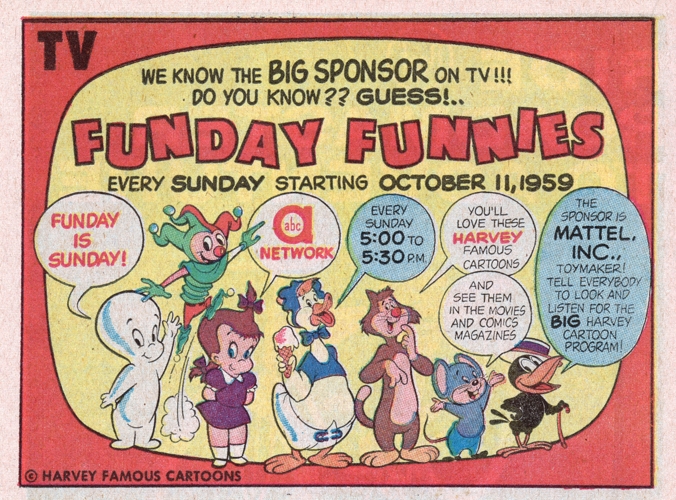
Need Any Help Changing That Record?
Hey, wait till you hear this one!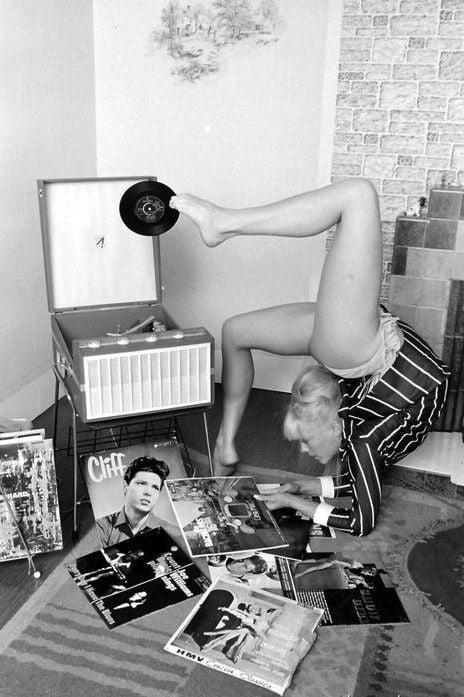
R.I.P. Meat Loaf (1947-2022)
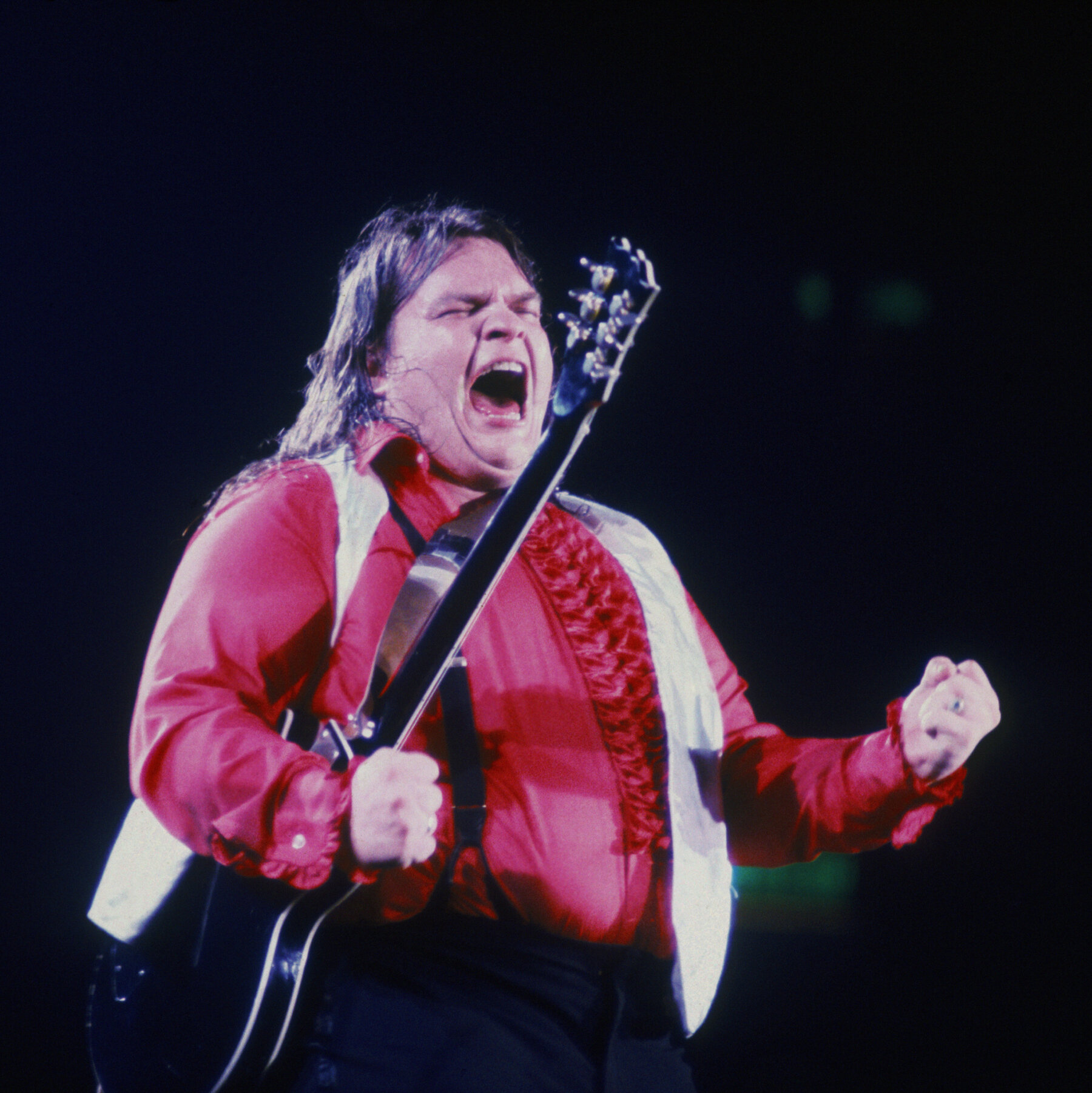 The year is not even a month old and we’ve already lost another rock icon – Meat Loaf passed away on January 20th. Cause of death has not been officially confirmed, but has been reported as COVID-related. He was 74 and unvaccinated.
The year is not even a month old and we’ve already lost another rock icon – Meat Loaf passed away on January 20th. Cause of death has not been officially confirmed, but has been reported as COVID-related. He was 74 and unvaccinated.
Born Marvin Lee Aday, the singer acquired his stage name while still a football player at Thomas Jefferson High School in Texas. His friends called him “M. L.” (his legit initials), but the football coach, ever the sensitive souls, said the “M. L.” should stand for “Meat Loaf” and the name stuck.
After some time at the University of North Texas ad following the death of his mother, Meat Loaf took off for Los Angeles. Fronting various bands, Meat Loaf found a degree of local success that led to a contract with Motown records, who teamed him with another singer, Shaun “Stoney” Murphy.
The failure of their one and only Motown album drove Meat Loaf to turn his attention to theater, where he found his first taste of real success. Loaf appeared in productions of Hair, Rainbow, National Lampoon’s Lemmings (as John Belushi’s understudy) and, of course, The Rocky Horror Show.
When Rocky Horror became a movie, Meat Loaf made his screen debut as the psychotic biker Eddie. It didn’t really help his career because the film initially bombed at the box office. By the time it became a sensation on the midnight movie circuit, Meat Loaf had already found recording success.
However, it was through these acting gigs that Loaf met the ying to his rock & roll yang – a young composer who wanted to write rock & roll musicals, Jim Steinman. In Meat Loaf, Steinman found the perfect voice for his over-heated, bombastic style of songwriting.
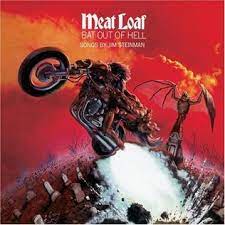 The pair began working on what became Bat Out of Hell in 1972. It took them almost two years to whip the project into shape. They shopped it to every major label and found no takers. Then, another rock icon, Todd Rundgren entered the picture. He agreed to produce the album, even before they had a record deal. When the album was completed, they finally managed to sell it to a small independent label, Cleveland International Records, who got it into record stores in 1977.
The pair began working on what became Bat Out of Hell in 1972. It took them almost two years to whip the project into shape. They shopped it to every major label and found no takers. Then, another rock icon, Todd Rundgren entered the picture. He agreed to produce the album, even before they had a record deal. When the album was completed, they finally managed to sell it to a small independent label, Cleveland International Records, who got it into record stores in 1977.
After a slow start, Bat Out of Hell caught on – spectacularly! It has become one of the biggest selling albums of all time, still moving over 200,000 copies every year, 45 years after its initial release.
With everyone eager for a follow-up, disaster struck. Constant touring, drugs and the fact that Meat Loaf had never been trained how to use his voice professionally resulted in Loaf losing his singing voice for what turned out to be almost a year. Steinman grew frustrated and under pressure from the record label, recorded the songs intended for Meat Loaf by himself. Unfortunately, Steinman was a gifted composer, but not that great a singer and that album, Bad for Good, sold poorly.
In the meantime, Meat Loaf returned to acting, playing the title role in the movie Roadie. The film proved a success and even better, Loaf’s singing voice recovered. He and Steinman finally recorded a follow-up to Bat Out of Hell – Dead Ringer. But the long wait and the impossible task of following up such a classic release resulted in disappointing sales for the LP in the U.S. (although it was a monster hit in the UK).
What happened next is really anybody’s guess. Both Steinman & Meat Loaf have told various versions and rumors abound, but the bottom line is that two stopped working together and lawsuits flew on both sides (although Meat Loaf was always adamant that there were never any bad feelings between the two individuals, just their management teams). Whatever the reasons, Meat Loaf had trouble selling albums without Steinman’s songs. It didn’t make things any better when Steinman offered two songs to Meat Loaf, but his record label rejected them. Those songs turned out to be “Total Eclipse of the Heart” and “Making Love Out of Nothing at All,” both of which became major hits for Bonnie Tyler and Air Supply respectively (reaching #1 & 2 on the Hot 100).
Luckily, time heals most wounds, and eventually Loaf and Steinman collaborated again on two sequels to their best-known work – Bat Out of Hell II and Bat Out of Hell III, with Meat Loaf copping a Grammy for his work on II. Sadly, Steinman’s health had begun to decline and he unable to complete work on BOoH III. Other writers had to be called in to complete the project.
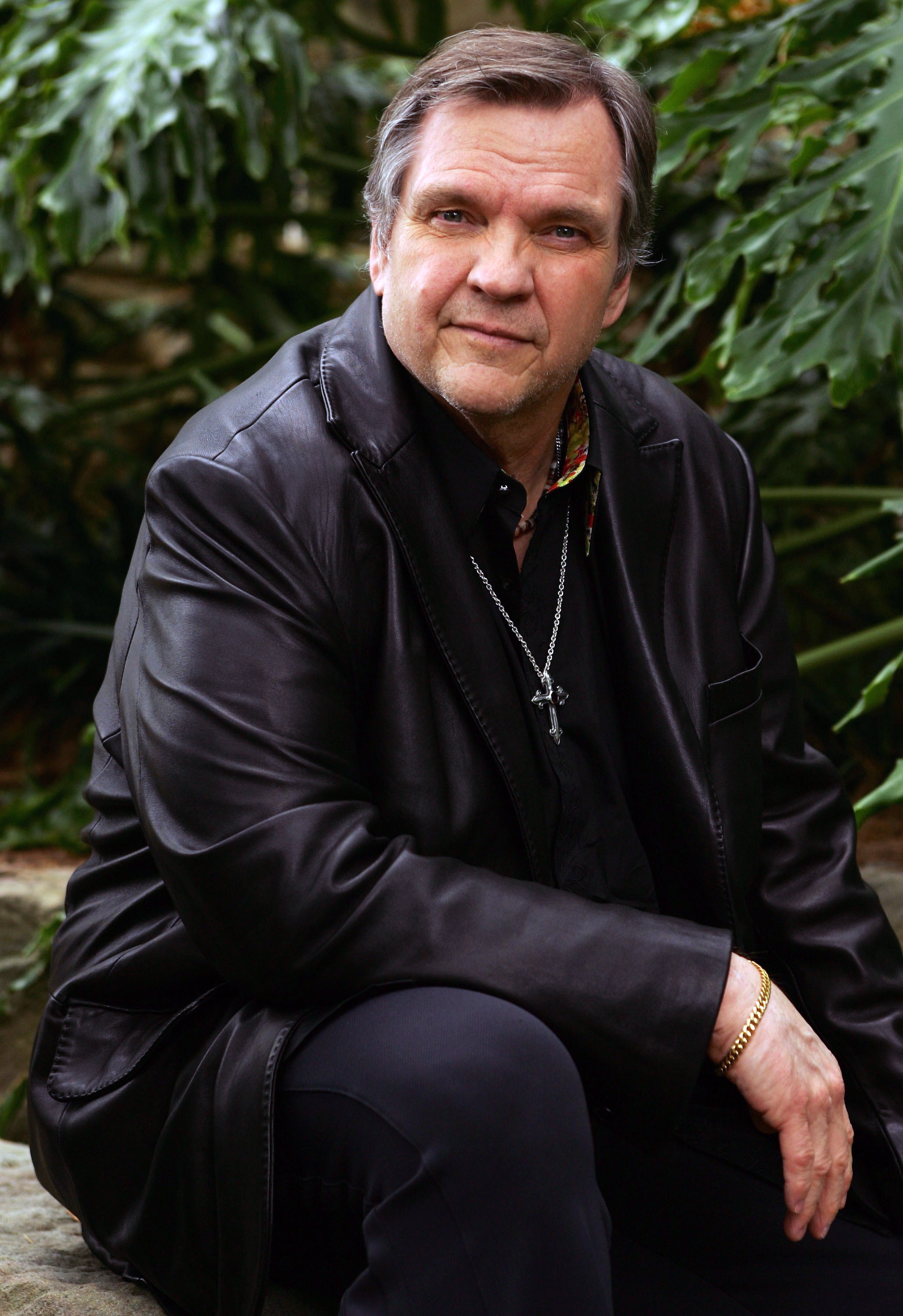
Steinman’s health continued to wprsen until he finally passed away on April 19th of 2021. Who knew then, that the other half of one of rock’s greatest collaborations would follow him just 9 months later?
Forgotten Stars of the 60’s - Johnny Tillotson
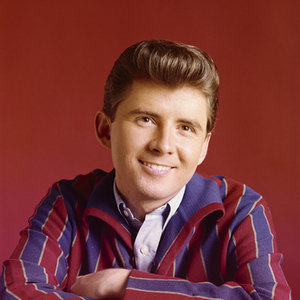 If you can remember, in the early days of Top 40 radio (before FM and album rock took off), most stations played a mix of rock, pop and even country music. You’d be just as likely to hear Patsy Cline & Johnny Cash as Elvis Presley and Chuck Berry.
If you can remember, in the early days of Top 40 radio (before FM and album rock took off), most stations played a mix of rock, pop and even country music. You’d be just as likely to hear Patsy Cline & Johnny Cash as Elvis Presley and Chuck Berry.
One of the artists from that era who firmly straddled the line between country and rock was a young man from Jacksonville, FL, named Johnny Tillotson. Signed by Archie Bleyer’s Cadence Records (the same man & label that had built the career of the Everly Brothers), Tillotson actually had a string of 9 Top 10 hits in the first half of the 1960’s, some of which he actually wrote himself. They included “Poetry in Motion,” “It Keeps Right on a-Hurtin’” (inspired by Tillotson’s father having to battle a life-threatening disease), “Send Me the Pillow That You Dream On” and “Talk Back Trembling Lips.” He also frequently appeared in many of the package tours Dick Clark put on the road.
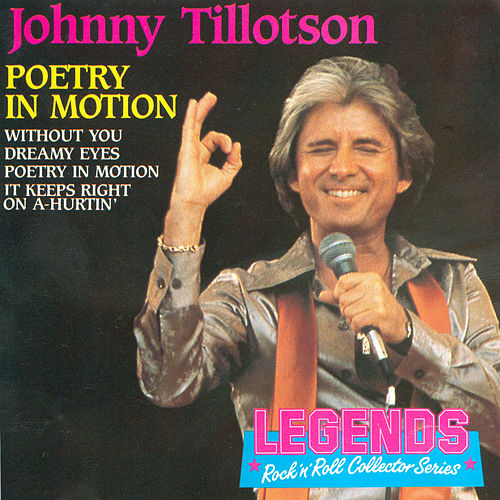
As the 60’s wore on and tastes in music shifted, Tillotson’s string of hits dried up. Nevertheless, Tillotson continued touring, headlining venues that ran the gamut from state fairs to Las Vegas lounges. Although chart success eluded him, he also continued recording, actually releasing his most recent single in 2010.
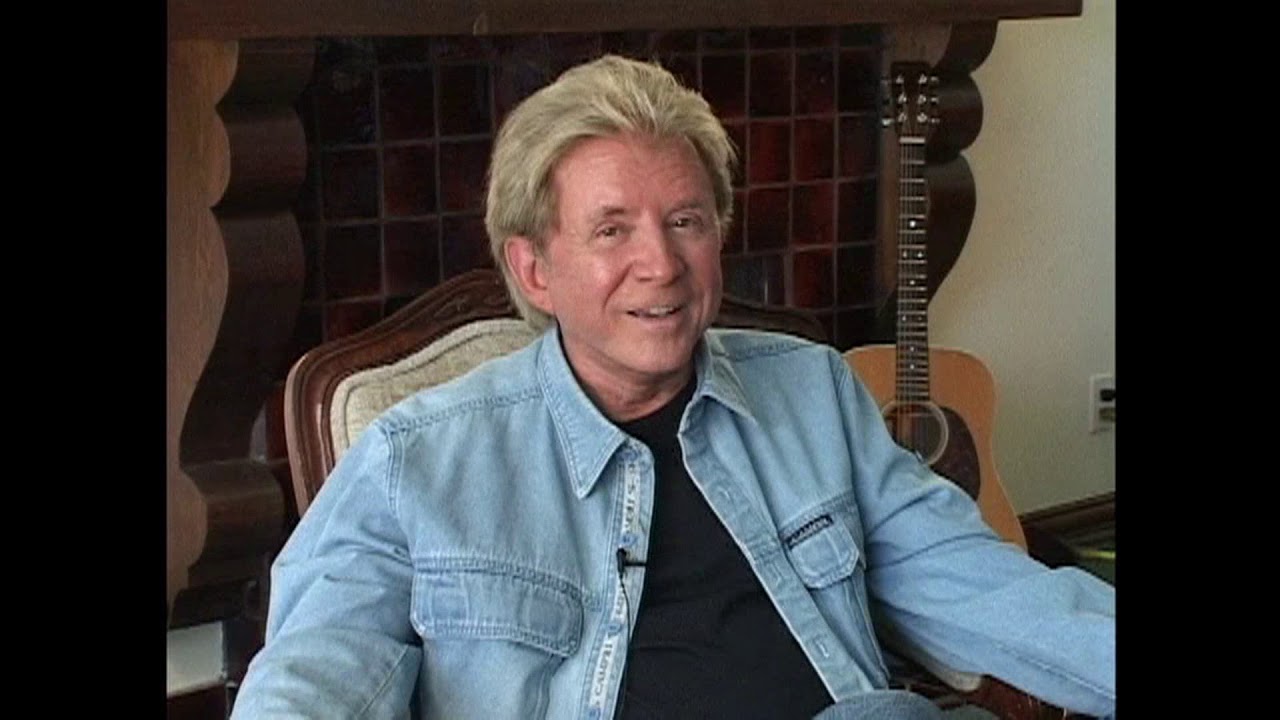 Tillotson has enjoyed success in Asia, touring in Japan, Hong Kong, Thailand, Singapore, Malaysia, Australia, and New Zealand on a regular basis.
Tillotson has enjoyed success in Asia, touring in Japan, Hong Kong, Thailand, Singapore, Malaysia, Australia, and New Zealand on a regular basis.
At 83, he remains active continuing to make personal appearances.
R.I.P. Ronnie Spector (1943-2022)
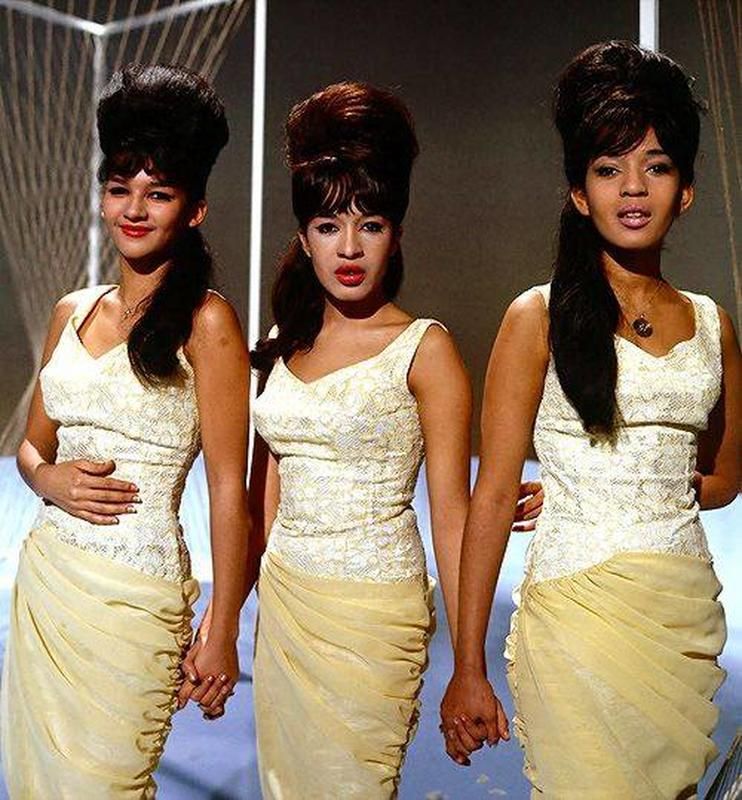 We lost a true rock & roll legend this week when Ronnie Spector passed away at the age of 78 after a brief battle with cancer.
We lost a true rock & roll legend this week when Ronnie Spector passed away at the age of 78 after a brief battle with cancer.
With an African-American mother and an Irish-American father, Veronica Bennett rose to fame as the lead member of a group she formed with her sister Estelle and their cousin Nedra Talley. After a couple of false starts involving additional members, the trio eventually settled on the name Ronnie & the Relatives. They landed a contract with Colpix Records (home to James Darren & Shelley Fabares), but their early records went nowhere despite the group working as regulars at the then “in-place” in Manhattan, the Peppermint Lounge.
Changing their name to the Ronettes, the group eventually came to the attention of producer/songwriter Phil Spector. Spector was smitten with the group’s lead singer and created a string of legendary hit records for the group, like “Be My Baby,” “Walking in the Rain” and “Baby, I Love You.”
On a tour of the UK, Ronnie became friends with John Lennon while sister Estelle briefly dated George Harrison. Ronnie also had a brief fling with Keith Richards. Returning home, the group opened for the Beatles on their final tour of America in 1966. But by this time, the group popularity was waning and after a European tour in 1967, the group broke up with Ronnie finally agreeing to marry Spector.
The marriage was not a happy one with Ronnie being held as a virtual prisoner in Spector’s mansion. He was also mentally abusive. When Ronnie had finally had enough, she ran away from the mansion in her bare feet, leaving everything behind.
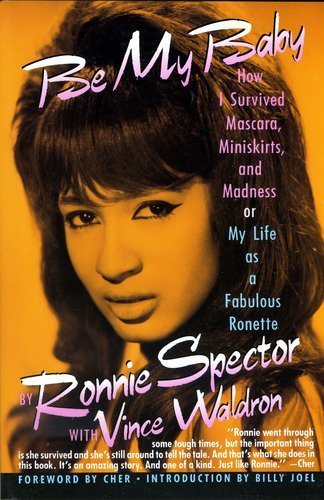 Ronnie retained the Spector name for the rest of her professional career and continued performing well into this century. She also returned to the record charts in 1986 when she sang with Eddie Money on his song “Take Me Home Tonight,” where Eddie mentions her by name in the lyrics and she reprises her “Be My Baby” signature hook.
Ronnie retained the Spector name for the rest of her professional career and continued performing well into this century. She also returned to the record charts in 1986 when she sang with Eddie Money on his song “Take Me Home Tonight,” where Eddie mentions her by name in the lyrics and she reprises her “Be My Baby” signature hook.
She had 3 adopted children when married to Spector and eventually remarried, this time to her manager Johnny Greenfield. The couple had two sons.
There is a film of her life in the works based of her autobiography, Be My Baby: How I Survived Mascara, Miniskirts And Madness.
Of course, she is a member of the Rock & Roll Hall of Fame.
Spies Like Us - Part 1
The Man From U.N.C.L.E.
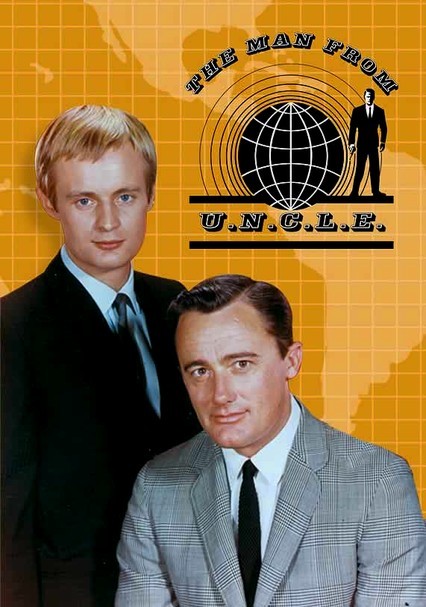 Was it the Beatles making all things British cool? Was it the Cold War & our desire to see our side win some clear-cut victories? Or were we just bored and totally over cowboys, who had been dominating movies and TV since our birth?
Was it the Beatles making all things British cool? Was it the Cold War & our desire to see our side win some clear-cut victories? Or were we just bored and totally over cowboys, who had been dominating movies and TV since our birth?
Whatever the reason, shortly after the Beatles touched off the British invasion in music, we welcomed a second invasion, this one led by spies. With the release of Goldfinger, actually the 3rd James Bond film, but the first to escape the drive-in and play to huge crowds in downtown theaters, America suddenly couldn’t get enough of secret agents.
While 007 is still killing people left & right with his famous license, most of the spies who rushed into action following Goldfinger have long been decommissioned. We’ll attempt to look back at some of the best that followed in the wake of Bond.
One of the first and most successful was actually created by James Bond’s literary father – Ian Fleming. MGM came to Fleming to see if he’d be interested in creating a spy show for American television. Never one to turn down a cash offer, Fleming took the money & gave the studio two characters – Napoleon Solo and April Dancer. The rest of the show’s premise, its ultimate name and the rest of the characters were fleshed out by co-creator, Norman Felton.
Very quickly, Felton decided that Solo would not be operating solo. He paired him with a Russian secret agent, Illya Kuryakin, who for reasons never explained, spoke with a British accent with nary a trace of Russian. (April Dancer would have to wait a while before taking her turn on stage.) Felton also added a British chief to the agency in Alexander Waverly.
Believe it or not, The Man From UNCLE was slow to catch on when it debuted on Tuesday nights at 8:30 (7:30 Central). But the show seemed to have some appeal with kids. So, NBC widely chose to move the show at mid-season to Mondays at 7:30 (6:30 Central) and there, it took off.
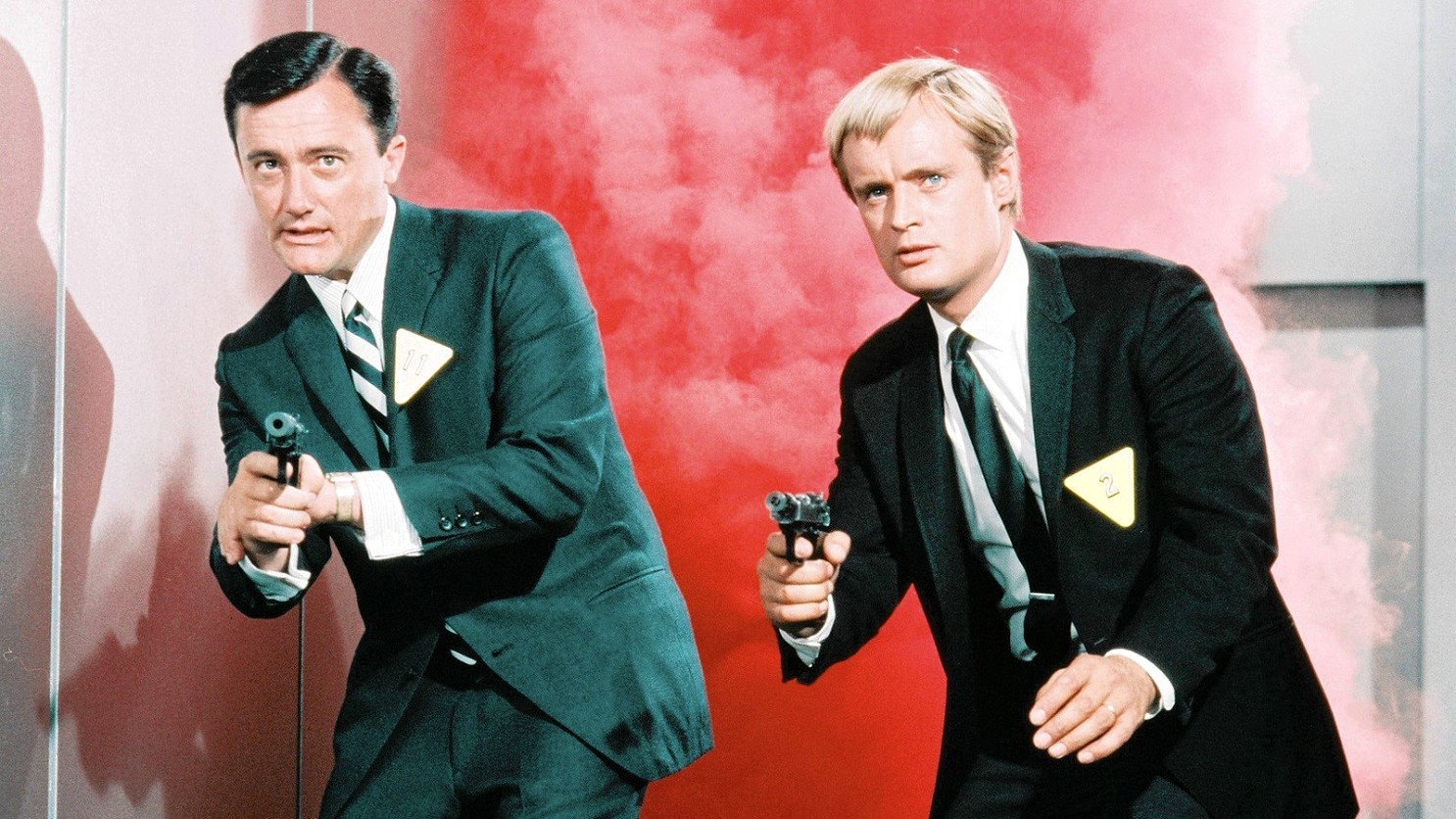
Robert Vaughn as the too-cool-for-school Napoleon Solo, had appeal for older viewers while David McCallum, with his aforementioned British accent and Beatle haircut, instantly became the favorite of teenage girls who had been swooning for British rock stars since the start of that year.
Who exactly funded the United Network Command for Law & Enforcement was never spelled out, nor why a supposedly international organization should have such an American name (as in “Uncle Sam”).
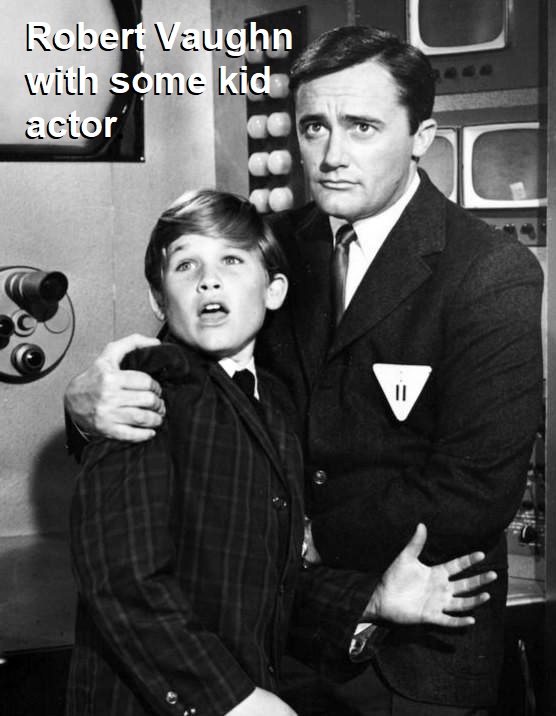
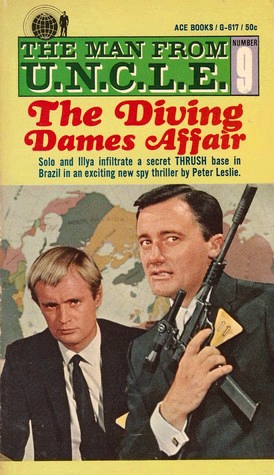 What many don’t know is that the title of the show was supposed to be Solo. However, Bond film producers Harry Saltzman & Cubby Broccoli threatened a lawsuit because Ian Fleming had also created a character named Solo for Goldfinger. Fleming himself got involved as both sides flung lawyers at each other. In the end, MGM was allowed to retain the character, but the show’s name had to change – and The Man From UNCLE was born.
What many don’t know is that the title of the show was supposed to be Solo. However, Bond film producers Harry Saltzman & Cubby Broccoli threatened a lawsuit because Ian Fleming had also created a character named Solo for Goldfinger. Fleming himself got involved as both sides flung lawyers at each other. In the end, MGM was allowed to retain the character, but the show’s name had to change – and The Man From UNCLE was born.
It was a great success, lasting 4 seasons and producing 105 episodes. It also spawned a brief spin-off, The Girl From UNCLE, where they finally got to use the April Dancer name. A young Stephanie Powers played Dancer with Rex Harrison’s son Noel taking the role of her obligatory British sidekick. Alas, it was one UNCLE too many. The show lasted only a single season.
Many of the UNCLE episodes were edited together to make movies the studio released to great success overseas (in the days before American TV series were imported wholesale to other countries), earning MGM even more money.
In its day, The Man From UNCLE spawned lots of merchandise and several original novels. Today, memorabilia from the show are on display at both the Ronald Reagan Library and at the CIA.
Now that we’ve opened “Channel D,” we’ll be back with more Spies Like Us soon.

R.I.P. Michael Nesmith - 1942-2021
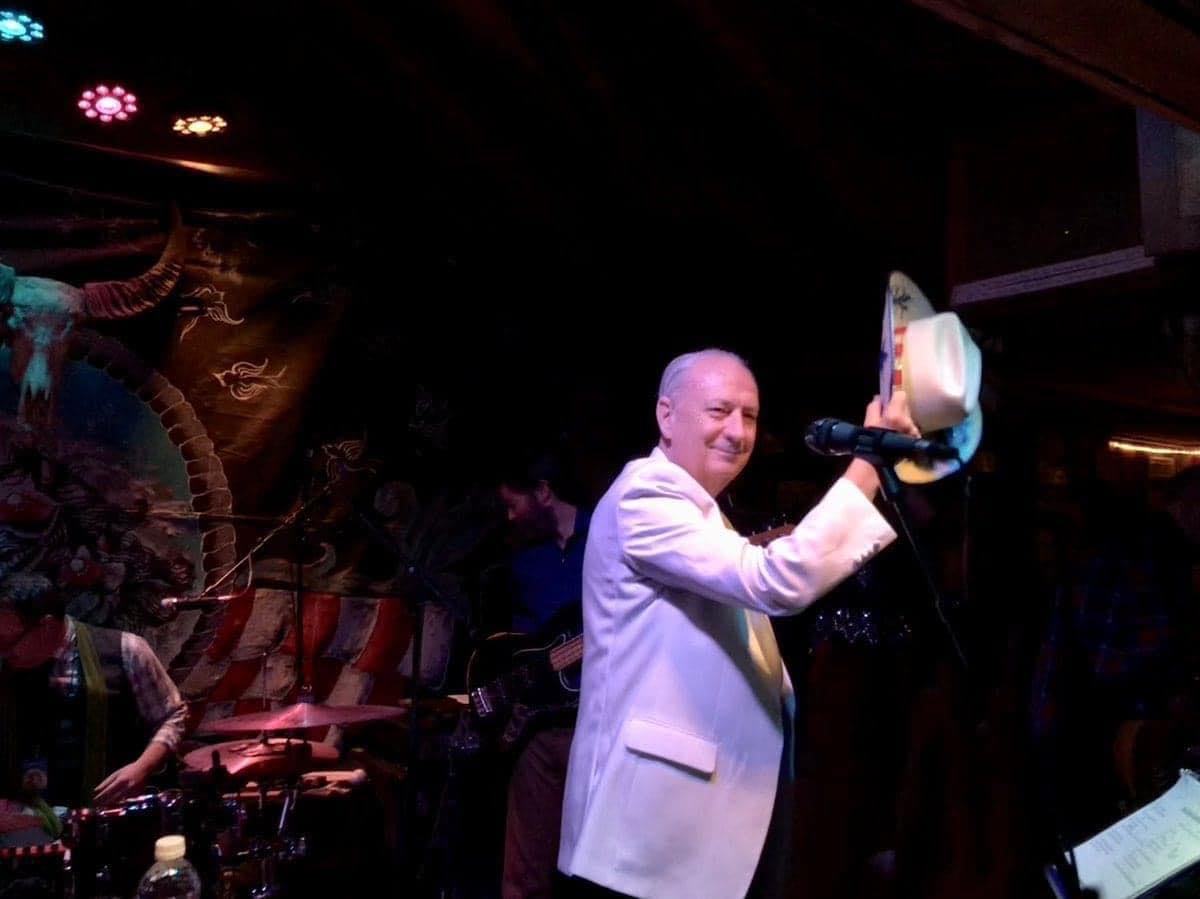 We lost a true rock & roll original on Friday, December 11, 2021, when one of the original members of the Monkees and one of the true pioneers in country-rock as well as music videos, Michael Nesmith, passed away just a few weeks shy of his 79th birthday.
We lost a true rock & roll original on Friday, December 11, 2021, when one of the original members of the Monkees and one of the true pioneers in country-rock as well as music videos, Michael Nesmith, passed away just a few weeks shy of his 79th birthday.
Nesmith was a scuffling musician and budding songwriter (in fact, he and his then-wife were living out of his car in L.A.) when he was notified that producers of a new NBC sitcom based on a make-believe rock band had cast him as a member of the Monkees. We all know what followed. The group’s first single, “Last Train the Clarksville,” was on its way to #1 even before the TV show debuted. During the years 1966 & 1967, the Monkees actually outsold the Beatles and the Rolling Stones.
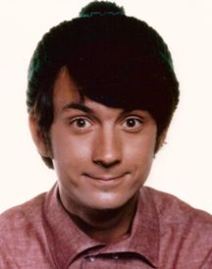 There was backlash against the band, almost from the beginning, especially when it was revealed that the lads were simply providing the vocals while L.A.’s best studio musicians (including Glen Campbell) were actually playing the instruments. No one at the time bothered to point out that that same situation applied to many other “legitimate” rock bands, such as the Beach Boys and Byrds.
There was backlash against the band, almost from the beginning, especially when it was revealed that the lads were simply providing the vocals while L.A.’s best studio musicians (including Glen Campbell) were actually playing the instruments. No one at the time bothered to point out that that same situation applied to many other “legitimate” rock bands, such as the Beach Boys and Byrds.
It was unquestionably Nesmith who led a rebellion among his fellow group members that actually saw them oust musical director Don Kirschner, and take more control of their own recordings, beginning with the 3rd album, Headquarters.
What was also obvious from the beginning was Nesmith’s talent as a songwriter. While lead vocals on Monkees’ singles were split between Mickey Dolenz and Davy Jones, Mike contributed many of the group’s stronger album tracks and gave the band another lead vocalist, ironically in the same mold as the band they were created to mimic – the Beatles.
When the bubble burst and the band’s fortunes quickly reversed, it was Nesmith who went on the have the only really viable solo career. In addition to writing Linda Ronstadt’s first hit, “Different Drum,” Mike formed the First National Band and recorded 3 LPs of very heavily country-flavored rock that are now credited with helping usher in that era in 1970s pop music. From there, Mike became one of the early proponents of the rock video, helping Nickelodeon launch a music video show called PopClips, which in turn helped spawn MTV. He released what was arguably the first video album Elephant Parts, which earned him the initial music video Grammy. Many of the songs from that were early staples of MTV’s rotation.
Finally, the Monkees were vindicated and took their rightful place in rock history, continuing to record and tour. In fact, Nesmith had just completed the Monkees’ “Farewell Tour” with bandmate Mickey Dolenz, less than a month before his passing.
His music will live as long as people listen to and love rock.

Here’s a little playlist of some of his work, both with the Monkees and as a solo artist:
- Papa Jean’s Blues
- Sunny Girlfriend
- You Told Me
- Mary, Mary
- The Girl I Knew Somewhere
- You Just May Be the One
- The Door Into Summer
- What Am I Doing Hanging ‘Round
- Joanne (with the 1st National Band)
- Propinquity
- Listen to the Band (The Monkees’ final single & the first to feature Mike as lead vocalist)
- Silver Moon (1st National Band)
- Cruisin’ (aka “Lucy & Ramona”)
- Rio
- Light
ABBA - Voyager
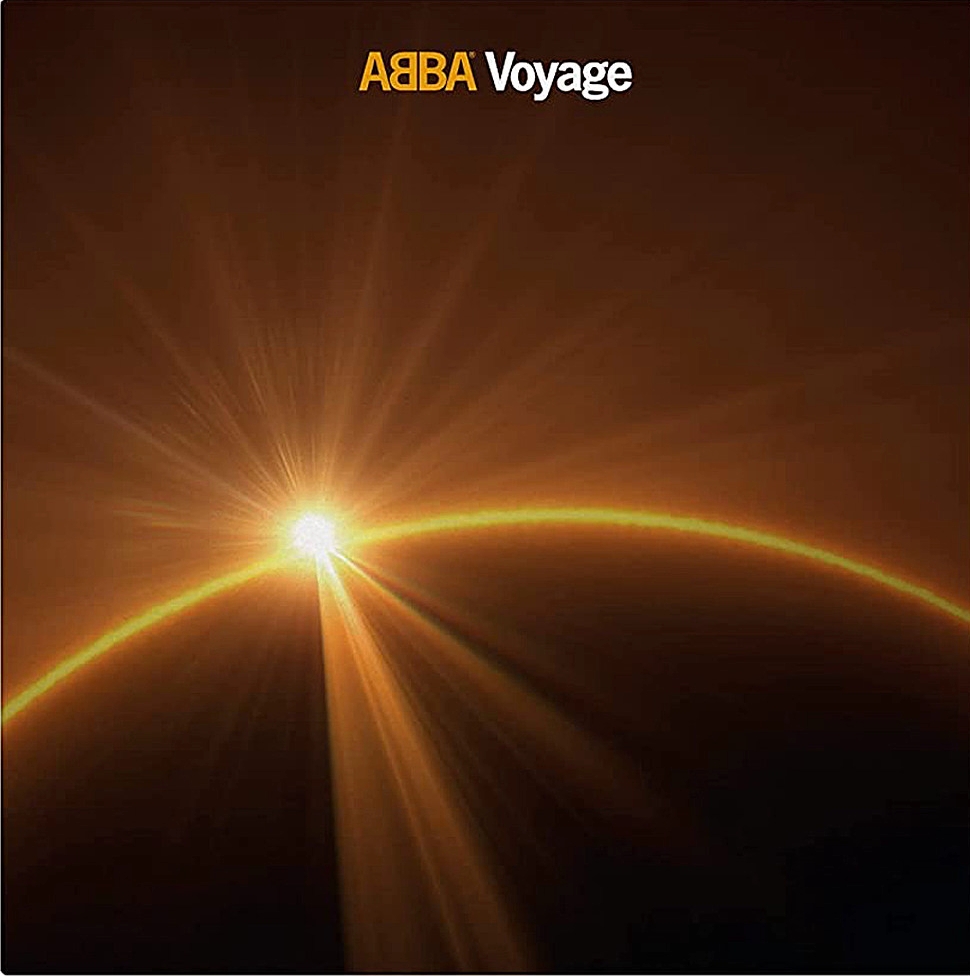 Okay. A few folks have asked us what we think of the new ABBA album, Voyager – the band’s first release in 40 years. On the whole, we like it A LOT. When we’re not listening to the music stream here at BoomtownAmerica.com, we’ve had this on our old-fashioned CD player and we’ve grown to appreciate it more with each subsequent listen.
Okay. A few folks have asked us what we think of the new ABBA album, Voyager – the band’s first release in 40 years. On the whole, we like it A LOT. When we’re not listening to the music stream here at BoomtownAmerica.com, we’ve had this on our old-fashioned CD player and we’ve grown to appreciate it more with each subsequent listen.
While there is nothing on the album that’s as incandescent as “Dancing Queen” or “Mamma Mia,” there’s also nothing as embarrassing as some of the tracks on their first LP. If you were not an ABBA fan before this album was released, we doubt that it’s going convert you. But if you’re one of the legion of ABBA devotees the world around, Voyager more than fills the bill.
Musically, the album continues the trend the band was following on their last two studio LPs (Super Trouper & The Visitors), away from the catchy, dance-flavored pop that made them the world’s best-selling rock act in their heyday. As a whole, the 10 tracks find the group aging quite gracefully and dealing with more mature subject matter.

Here's a track-by-track rundown:
1. I Still Have Faith in You – Appropriately, the album opens with this nice, understated number with Frida and Agnetha expressing lyrically what they all must have been thinking when they began work on new material – do they still have it in them? Two minutes in – they answer their own question when the patented ABBA harmony kicks in with full force. Yep, they still have it.
2. When You Danced with Me – This song reminded us of something that set ABBA apart from nearly all other mega-successful rock acts. Virtually every single American and British band is steeped deeply in the tradition of American blues. ABBA, being from Scandinavia, was not. Instead, they cut their musical teeth on European folk traditions (think beerhalls & Oktoberfest). That sound is in full flower on this track – a nice, up-tempo number that will having you reaching for your lederhosen and Heidi braids.
3. Little Things – Hard to believe, but this is ABBA’s first (and very likely, only) Christmas song. It describes a warm, quiet Christmas morning with the family. It’s a little slower than the first two tracks, but finishes up with an angelic children’s chorus that will have you wondering why they waited so long to create some holiday music.
4. Don’t Shut Me Down – A nice little tune that reminds you how effortlessly they seemed to spin pop gold out of thin air back in the 1970s.
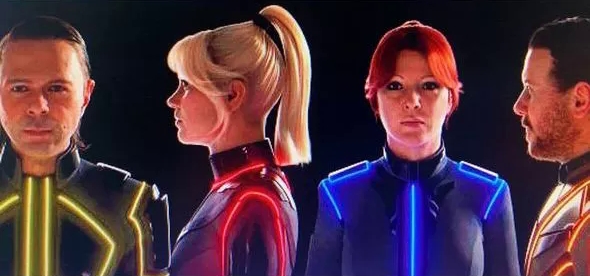 5. Just a Notion – If you want a track that brings back the full ABBA sound from the height of their popularity, this is your track. It’s easy to see why. It was originally written back in the day, but Benny & Bjӧrn could never get a mix they liked. Until now. It demonstrates how incredibly deep was their talent when this catchy little pop-rocker was put on the shelf. Other versions of this tune have surfaced over the years as bootlegs and a snippet of it was included on a deluxe ABBA box set. Now, we have it fully produced.
5. Just a Notion – If you want a track that brings back the full ABBA sound from the height of their popularity, this is your track. It’s easy to see why. It was originally written back in the day, but Benny & Bjӧrn could never get a mix they liked. Until now. It demonstrates how incredibly deep was their talent when this catchy little pop-rocker was put on the shelf. Other versions of this tune have surfaced over the years as bootlegs and a snippet of it was included on a deluxe ABBA box set. Now, we have it fully produced.
6. I Can Be That Woman – Following the trip back to disco-days-ABBA, the next track finds them in a more mature, reflective mood. This is a slow tune dealing with the inevitable disappointments that crop up in long-term relationships. Agnetha has a knack like no other pop singer for adding a note of real sadness & regret to her vocals. There’s no happy ending to this one – just the hint that things will probably continue as they have.
7. Keep an Eye on Dan – Initially, ABBA was attacked for the lack of depth in their lyrics (“Bang-a-Boomerang,” anyone?). But as the band went on and Bjӧrn Ulvaeus grew more confident in his handling of the English language, the content of their lyrics matured spectacularly. They were one of the first pop bands to deal with divorce (“Knowing Me, Knowing You”) and the bittersweet feeling of watching your children go up and away from you (“Slipping Through My Fingers”). The previous track and this one continues that trend. This song deals with the strain of shared parental custody. Moreover, the music has an undercurrent of foreboding. There is something wrong, not just in the relationship between the divorced parents, but perhaps with their child as well. This one, like “The Day Before You Came,” creates a general feeling of unease without ever explaining exactly what’s wrong, inviting you to complete the process with your own interpretation. Not only that, but the track concludes with a callback to the melody of a previous ABBA hit. This is the album’s best track.
8. Bumblebee – Don’t let the title fool you. This is a quiet little meditation on what might happen if the world’s bee population is driven to extinction juxtaposed with an idyllic stroll through a garden on a sunny afternoon.
9. No Doubt About It – Okay, enough with the downers. This one is your typical ABBA up-tempo rocker. Lyrically, it’s about a woman hell-bent on picking a fight with her mate and then regretting it. Not to worry, as the song’s final line states: “This isn’t where it ends.”
10. Song of Freedom – A song in the tradition of “I Have a Dream.” Placed as the final track of Voyager, we end with a note of hope for the future, elegantly stated by one of the great rock acts of all time.
The band never really broke up. They just never expected they would be taking a 40-year break. No one knows if we’ll ever get any more ABBA music; but if not, Voyager is more than up to the task of being a sweet, satisfying farewell effort.
You Have Been Warned
Those of a certain age can remember these attacks...
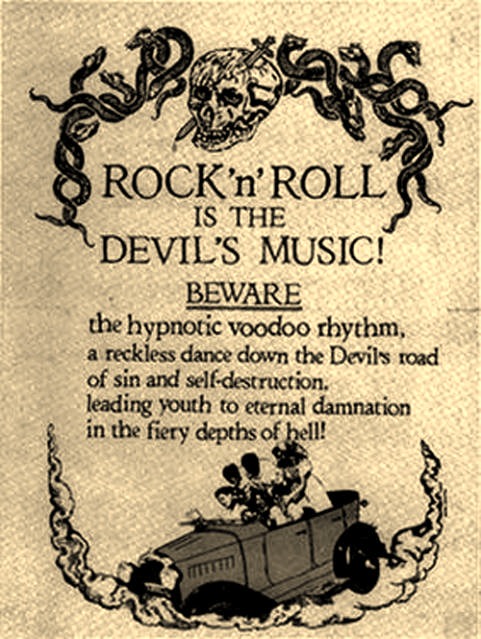
Pop Up Player
Latest Posts–Health & Wellness
-
Chill Out & Lose Weight?
As we head into winter, the experts say turning down your thermostat can cause your body to produce a hormone called irisin that can lead to burning more calories and weight loss! You don’t have…
-
Are You Hot or Cold When It Comes to Pain Relief?
There have long been two schools of thought regarding bodily pain. Some tell you to put ice on it. Some tell you to use heat. Which is better? That depends. According to this most recent…
-
Tips for Better Sleep
As we grow older, many of us begin experiencing trouble sleeping through the night. If you find yourself waking up in the dark multiple times during the night, try these “sleep hacks” to getting a…
-
Vitamin C to See
Research indicates that vitamin C can reduce the risk of developing cataracts. But don’t start popping pills. The study also should that this benefit only comes from dietary vitamin C. In others words, you need…
-
To Vape or Not to Vape
Vaping – the practice of smoking using an “electronic cigarette” has been touted as a safe alternative smoking, but is it really? If you are a current tobacco smoker, the answer is – it’s safer…
-
Beating the 4 AM Blues
Many us find sleeping all the way through the night more of a challenge than we did a few years ago. Here are some of the most common cause…and cures! Eating Too Close to Bedtime…


